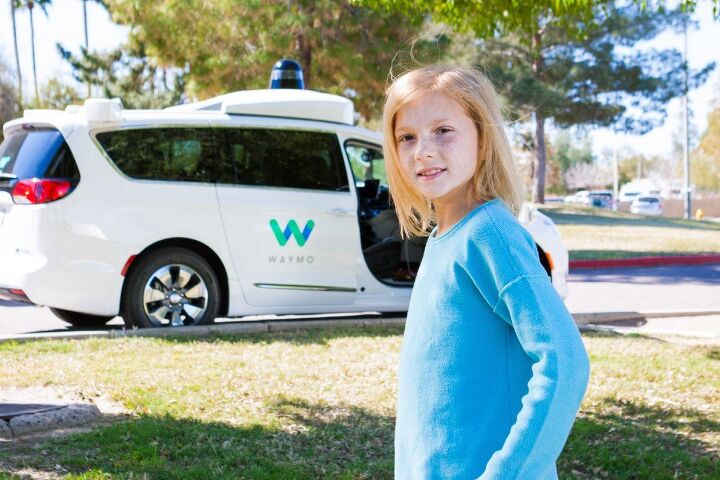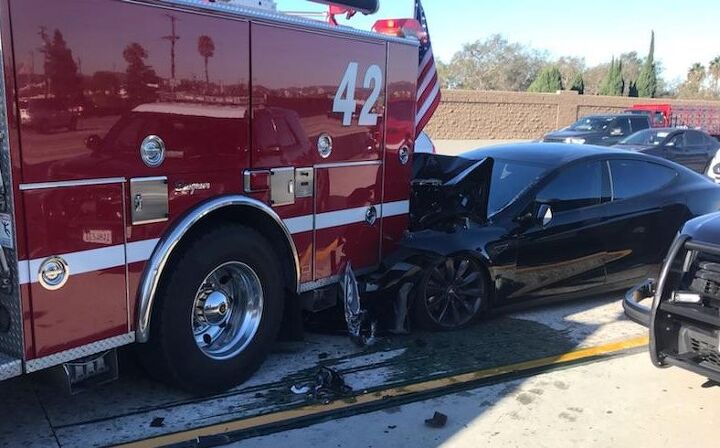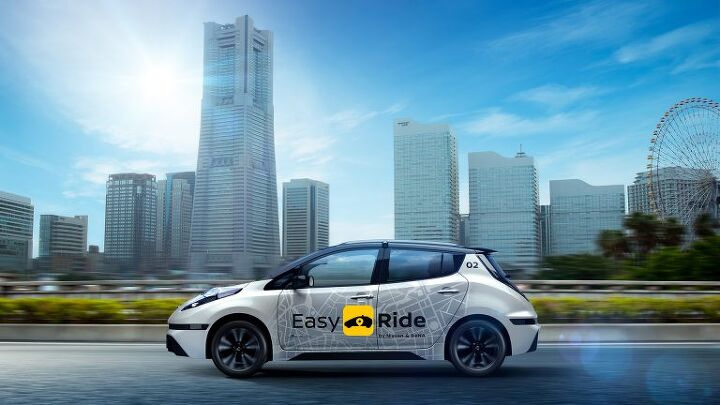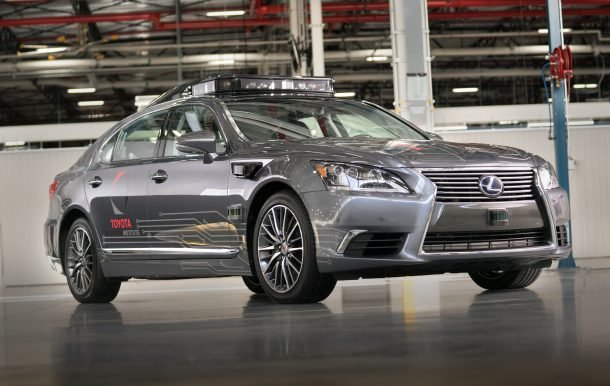#AVs
Old Man Lutz Gives Dealerships 20 Years to Live, Doubles Down on Driving Dystopia
Longtime auto executive Bob Lutz has always been an incredibly outspoken individual. His years of hard work have given him an insight into the industry that few possess, and he’s only become more willing to share that information as he ages. Like the industrious caterpillar, his ceaseless labor has allowed him to metamorphose into what is arguably his perfect form near the end of his lifecycle — a candid automotive butterfly.
We love hearing anything has to say, as his insight borders on the surreal, but with more than enough truth to come to pass. Last year, he divined a future where the car as we know it is destroyed by governmental regulation and advanced technologies. The dystopian plot seemed impossible upon a cursory glance, but the deeper you drive, the more plausible it begins to seem.
Lutz refocused this week at the SAE International WCX World Congress Experience in Detroit, saying the traditional dealer model will be among the first things to go in the brave new world of mobility. He called car dealerships an “endangered species,” suggesting to the crowd that it had “another 20 to 25 years before it’s all over.”
Waymo Comments on Autopilot Crash, Blames Driver
While the investigation into Tesla’s most recent Autopilot-rated fatality continues, Waymo chimed in to remind everyone that the company’s self-driving system isn’t actually self-driving at all. That almost makes it sound like the Google offshoot is coming to the defense of Tesla Motors. However, the truth of the matter is this was a golden opportunity for Waymo to sneak in another humblebrag that its autonomous technology is the genuine article and that most of its competitors are playing catch-up.
It’s a valid point. We shouldn’t forget that Tesla’s Autopilot is not representative of true autonomy and the burden of safety still falls squarely on the driver. But the manufacturer didn’t always market it that way, and only updated the system to require hands on the wheel after the first fatality. This incident is different from the recent Uber crash in Tempe, Arizona. But just how different is debatable and largely dependent on what qualifies as “self-driving” to the average person.
“Tesla has driver-assist technology and that’s very different from our approach,” explained Waymo CEO John Krafcik last week, before Tesla revealed that Autopilot was engaged during the Model X crash. “If there’s an accident in a Tesla, the human in the driver’s seat is ultimately responsible for paying attention. We don’t know what happened here, but there was no self-driving.”
Arizona, Suppliers Unite Against Uber Self-driving Program
Ever since last week’s fatal accident, in which an autonomous test vehicle from Uber struck a pedestrian in Tempe, Arizona, it seems like the whole world has united against the company. While the condemnation is not undeserved, there appears to be an emphasis on casting the blame in a singular direction to ensure nobody else gets caught up in the net of outrage. But it’s important to remember that, while Uber has routinely displayed a lack of interest in pursuing safety as a priority, all autonomous tech firms are being held to the same low standards imposed by both local and federal governments.
Last week, lidar supplier Velodyne said Uber’s failure was most likely on the software end as it defended the effectiveness of its hardware. Since then, Aptiv — the supplier for the Volvo XC90’s radar and camera — claimed Uber disabled the SUV’s standard crash avoidance systems to implement its own. This was followed up by Arizona Governor Doug Ducey issuing a suspension on all autonomous testing from Uber on Monday — one week after the incident and Uber’s self-imposed suspension.
Unpacking the Autonomous Uber Fatality as Details Emerge [Updated]
Details are trickling in about the fatal incident in Tempe, Arizona, where an autonomous Uber collided with a pedestrian earlier this week. While a true assessment of the situation is ongoing, the city’s police department seems ready to absolve the company of any wrongdoing.
“The driver said it was like a flash, the person walked out in front of them,” explained Tempe police chief Sylvia Moir. “His first alert to the collision was the sound of the collision.”
This claim leaves us with more questions than answers. Research suggests autonomous driving aids lull people into complacency, dulling the senses and slowing reaction times. But most self-driving hardware, including Uber’s, uses lidar that can functionally see in pitch black conditions. Even if the driver could not see the woman crossing the street (there were streetlights), the vehicle should have picked her out clear as day.
GM Claims It Will Start Manufacturing Autonomous Cars Next Year
General Motors has announced it will begin manufacturing autonomous vehicles by 2019. Since purchasing Cruise Automation in 2016, GM has invested heavily into self-driving cars. However, its Chevrolet Bolt-based Cruise AV has only served as a testbed for the technology. That will change next year when the Orion Township assembly plant in Michigan starts building examples for commercial use.
If so, that would make General Motors the first company to sell an autonomous vehicle. However, it’s not entirely clear if that’s the ultimate goal. Thus far, GM has only said the autos will enter into a “ride-sharing environment” where the vehicles can be managed in a fleet — perhaps something akin to Uber.
Obviously, the analogy is as accurate as it is unfortunate. Uber recently suspended autonomous testing after one of its vehicles fatally struck a pedestrian earlier this week. While GM’s product planning can hardly be faulted for the goings-on at another company, the collision could see the general public wonder if production Cruise AVs are ready to take over the road.
Self-Driving Uber Vehicle Fatally Strikes Pedestrian, Company Halts Autonomous Testing
In the evening hours of March 18th, a pedestrian was fatally struck by a self-driving vehicle in Tempe, Arizona. While we all knew this was an inevitability, many expected the first casualty of progress to be later in the autonomous development timeline. The vehicle in question was owned by Uber Technologies and the company has admitted it was operating autonomously at the time of the incident.
The company has since halted all testing in the Pittsburgh, San Francisco, Toronto, and greater Phoenix areas.
If you’re wondering what happened, so is Uber. The U.S. National Transportation Safety Board (NTSB) has opened an investigation into the accident and is sending a team to Tempe. Uber says it is cooperating with authorities.
Video: Google's Waymo Exhibits the Total Lack of Excitement Inside Driverless Cars
After getting the go-ahead from Arizona, autonomous tech firm Waymo has implemented the first ride-hailing service in the country that doesn’t employ human drivers. One month after securing approval, and with no major incidents to date, the company has begun offering its autonomous taxi service to paying passengers. On Tuesday, Waymo CEO John Krafcik gave a speech at South by Southwest (the indie music festival that evolved into a media and tech bonanza) to showcase how things were getting on.
He said Waymo ditched the Phoenix test drivers and is readying its fleet of driverless Chrysler Pacificas for other parts of the country. The festival was then treated to a short video of passengers yawning. Those yawns are actually trumpets, however, heralding the introduction of autonomous vehicles in North America.
Ford Takes New Autonomous Fleets and Operating System to Miami
It has begun. Ford is finally ready to launch another batch of its faux-autonomous Domino’s pizza delivery vehicles to assess how people will interact with a self-driving vehicle. False autonomy has become a bit of a gimmick with Ford, but a necessary one. Last year, it disguised a man as a seat to assess how people would respond to a vehicle that only communicated using lights. Now it’s running with a similar strategy in a deal with the famous pizza chain, adding Postmates for good measure.
While the information gleaned from the endeavor is less important, the fact that Ford is already actively working with business partners on autonomous applications is what really matters. It’s laying the groundwork for future business opportunities.
However, if you’re worried that Ford’s pretend self-driving vehicles are a sign that it’s losing the race toward the self-driving car, don’t. In addition to the Domino’s car, the automaker is also launching blue-and-white research vehicles equipped with new self-driving hardware and software technology from Argo AI.
Automated Cars Are Not Able to Use the Automated Car Wash
We’ve been cautiously optimistic about the progress of autonomous driving. The miraculous technology is there, but implementing it effectively is an arduous task of the highest order. A prime example of this is how easy it is to “blind” a self-driving vehicle’s sensors.
TTAC’s staff has had its share of minor misadventures with semi-autonomous driving aids, be it during encounters with thick fog or heavy snow, but truly self-driving cars have even more sensitive equipment on board — and all of it needs to function properly.
That makes even the simple task of washing a self-driving car far more complicated than one might expect, as anything other than meticulous hand washing a big no-no. Automated car washes could potentially dislodge expensive sensors, scratch them up, or leave behind soap residue or water spots that would affect a camera’s ability to see.
Uber Technologies Is Getting Awfully Chummy With Toyota
Uber CEO Dara Khosrowshahi says he expects the company to have its own autonomous cars within a year but, since the company doesn’t build cars, it needs to partner with one that does. Until now, the company has been in bed with Volvo Cars, previously stating its intention to purchase 24,000 self-driving XC90 SUVs from the brand between 2019 to 2021.
However, the relationship between the two firms isn’t exclusive or binding. That means Uber can still play the field, and may have already found a friend with benefits in Japan.
On Thursday, Khosrowshahi posted a photo on Twitter of himself laughing with Toyota Motor Corp. President Akio Toyoda and Executive VP Shigeki Tomoyama at the automaker’s headquarters. “Having fun with Akio-San and Tomoyama-San @ToyotaMotorCorp HQ,” he wrote. “Great discussions about growing our #autonomous partnership and lessons 4 me in building a great culture. And yep, those are Ichiro [Suzuki’s] bats.”
It seems Toyota could be the side piece Uber is looking for.
Please Stop: Toyota Design Head Envisions Future Without Mass-market Automobiles
It’s starting to feel like people in the automotive industry simply cannot help but blurt out ludicrous claims involving a hypothetical future nobody on the outside seems to care about. These people, in charge of the the automobile’s ultimate form, appear to be so singularly obsessed with the vague concept of “mobility” that they can’t imagine any other alternative.
This week’s example came from Simon Humphries, the new general manager of Toyota’s advanced R&D, who mused about a tomorrow that didn’t need mass-market models. However, we’re not satisfied to condemn the design chief. Media outlets deserve a share of the blame for promoting these concepts without much logical backing.
Idiots Need to Understand That Self-driving Cars Aren't Here Yet
With automakers, the Department of Transportation, NHTSA, and Congress all attempting to get self-driving vehicles onto the road as quickly as possible, the autonomous revolution finds itself in a sticky situation. Some motorists are confusing their semi-autonomous technology with an impenetrable safety net. This has resulted in avoidable accidents as drivers assume their high-tech cars can cope with whatever’s thrown at them, and it’s probably going to get worse as more idiots buy them.
We’ve already covered how semi-autonomous features make everyone less-effective behind the wheel and the fatal Tesla Autopilot crash was a story we kept up with for over a year. Investigators ruled that accident was the perfect storm of mishaps, however, there remains a common thread between the two pieces. The driver may have been spared were he not so eager to put his faith into the vehicle’s semi-autonomous system.
On Monday, a Tesla Model S collided with stopped firetruck that was responding to an accident on a freeway in Culver City, California. As you already guessed, the driver told the firefighters that the vehicle was operating in Autopilot mode. While nobody was injured in the crash, it’s another stroke in the ugly portrait of people placing blind trust in a technology they don’t understand. And, boy oh boy, are we just getting started on illustrating this problem.
Nissan, Renault, Mitsubishi Hunting for Robo-taxi Deals With Tech Companies
The alliance consisting of Nissan, Renault, and Mitsubishi Motors is currently searching for partners for a plunge into the robo-taxi business. While chairman Carlos Ghosn claims mobility will never replace traditional ownership, he acknowledges the need to explore other avenues to remain competitive.
“A lot of people think this is substitution. It’s not — it’s addition,” Ghosn said in November. “The traditional business of building cars and selling cars and owning cars is going to continue.”
However, the supplemental businesses aren’t going off half-cocked. Ogi Redzic, Alliance senior vice president, has said he’s personally overseeing about 1,000 employees tasked with developing connectivity services for the automotive group and intends to announce the partners for the new autonomous cab service in the coming months.
Determined to Look Cutting Edge, Toyota's Bringing Its Best Tech to CES
Wanting to remind the world that it’s not as far behind in the race toward autonomy as some have claimed, the Toyota Research Institute intends to bring a Lexus LS 600hL equipped with its 3.0 autonomous research platform to CES next week. Toyota introduced the platform 2.0 last March — the first autonomous testing platform developed entirely by TRI.
Since then, the automaker has focused heavily on machine vision and machine learning, leaning on all the popular sensing equipment currently synonymous with autonomous technologies. As the system was designed specifically to improve over time, version 3.0 uses a Luminar LIDAR system with a 200-meter sensor range that covers a 360-degree perimeter of the vehicle. The testbed Lexus is also equipped with shorter-range sensors, which are placed low on all four sides of the vehicle and are meant to spot low-level and smaller objects.
No Thanks: Nissan Wants to Input Your Brainwaves on Tomorrow's Cars
Certain automotive technologies are getting borderline out of hand. But nothing stops the march toward progress. Keen to show off its developmental might, Nissan plans to unveil something called “brain-to-vehicle” (B2V) technology at next week’s Consumer Electronics Show.
While the system borders on the fantastical, Nissan claims it can interpret signals from a driver’s brain to help a semi-autonomous vehicle understand how to best respond.






![Unpacking the Autonomous Uber Fatality as Details Emerge [Updated]](https://cdn-fastly.thetruthaboutcars.com/media/2022/07/19/9193994/in-wake-of-crashes-public-confidence-in-self-driving-cars-pulls-a-u-turn.jpg?size=720x845&nocrop=1)






















Recent Comments